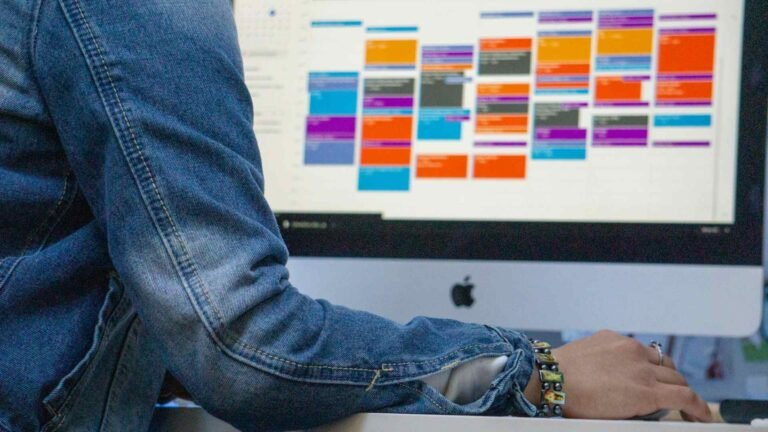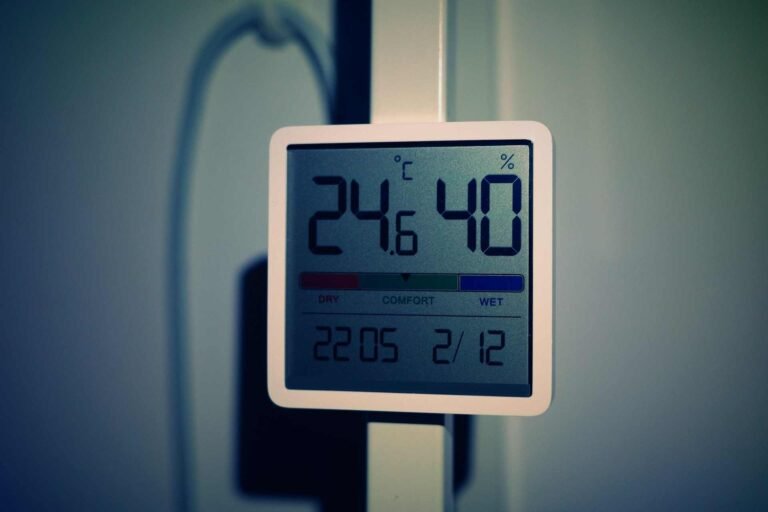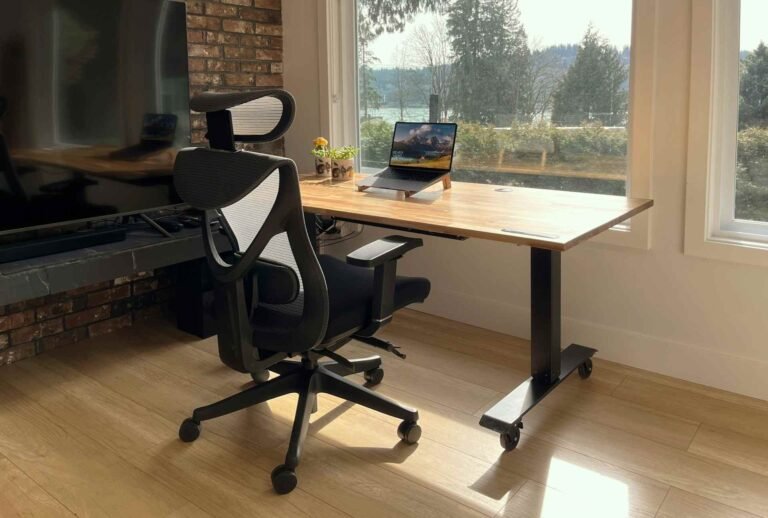Do Fidget Toys Help You Focus? The Truth About Fidgeting
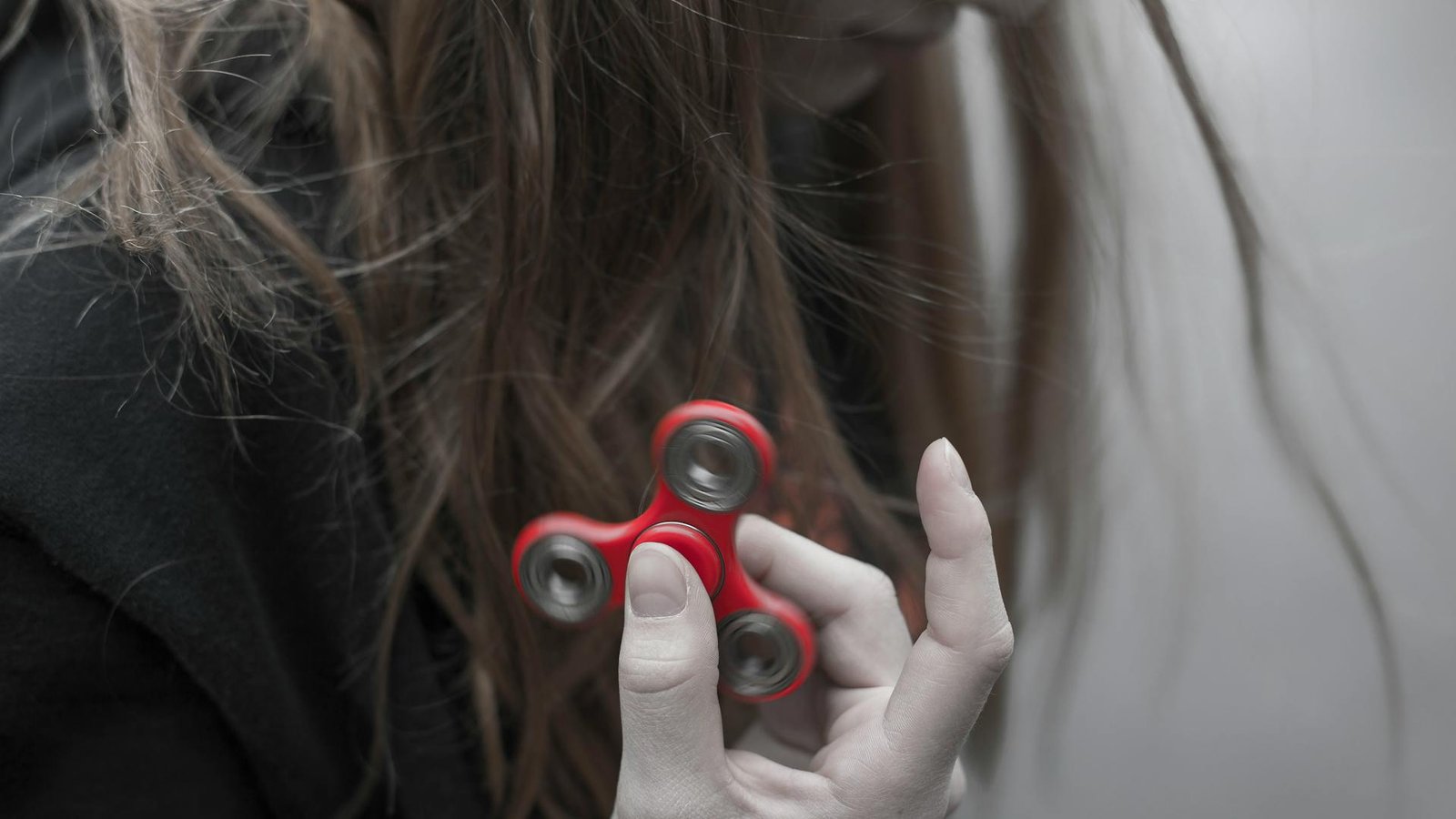
We’ve all done it. Sitting at our desks, clicking pens until our coworkers shoot us death glares, tapping feet to an imaginary beat, or twirling hair around our fingers during that endless Zoom meeting. Turns out, all that restless energy might not be a bad habit after all. The explosion of fidget toys over the past years has sparked a massive debate: do fidgets actually help you focus, or are they just shiny distractions disguised as productivity tools?
Let’s dig into the squishable, spinnable, clickable truth behind these pocket-sized focus companions.
What Makes Fidgeting More Than Just Annoying?
Before we judge the person bouncing their leg like they’re auditioning for a percussion section, there’s actually some fascinating science happening behind the scenes. Our brains are energy-hungry machines constantly seeking stimulation, and for many people, a little bit of movement can be the secret ingredient that keeps everything running smoothly.
Think about how you naturally behave during phone calls. Most of us don’t just sit perfectly still, staring at a wall. We pace, doodle, or twist the phone cord. That’s because our brains often work better when our bodies have something small to do. This isn’t procrastination or lack of discipline. It’s actually your nervous system looking for the right balance of stimulation to maintain alertness without becoming overwhelmed.
The concept is pretty straightforward: gentle, repetitive movement can help regulate our arousal levels. Too little stimulation? We get drowsy and zone out. Too much? We become anxious and scattered. Fidgeting occupies just enough of our attention to keep us in that sweet spot where focus thrives.
Do Fidget Toys Help You Focus, Really?
Here’s where things get interesting. The answer isn’t a simple yes or no, because humans are wonderfully complicated creatures. Whether fidget toys help you concentrate depends heavily on the person, the task, and how the fidget toy is being used.
For people with ADHD or those who naturally have higher sensory needs, fidget toys can be absolute game-changers. These individuals often need more physical input to reach their optimal focus zone. A fidget spinner, cube, or even a simple stress ball can provide that necessary sensory feedback without completely derailing their attention from the main task.
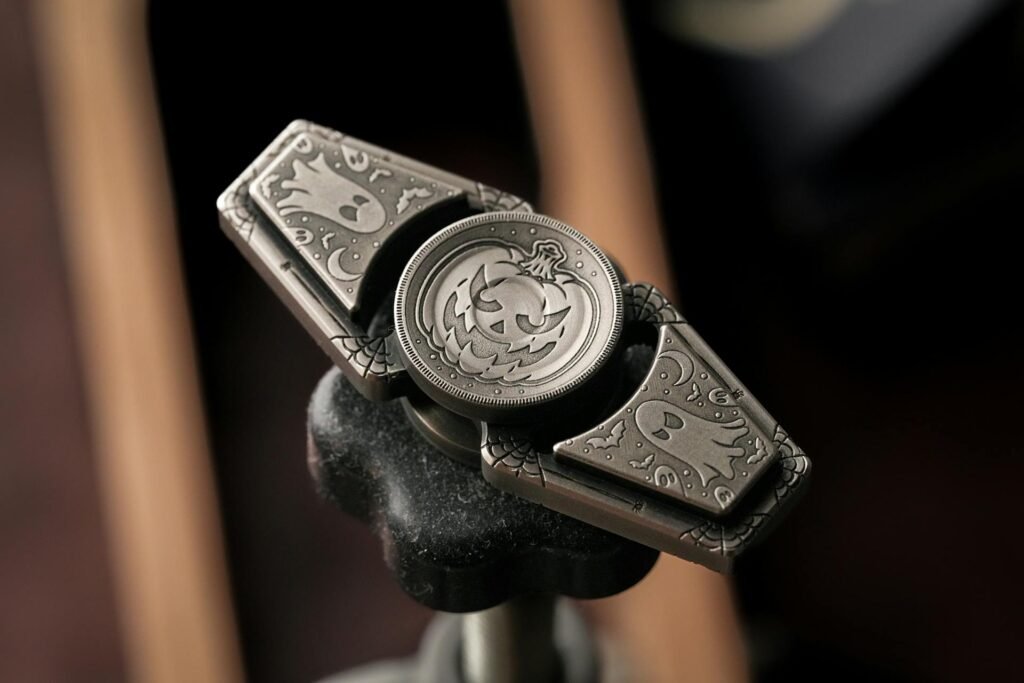
However, and this is crucial, the benefits of fidget toys shine brightest when they’re used correctly. The fidget should be almost automatic, something your hands can do without much conscious thought. The moment you’re paying more attention to mastering a new trick with your fidget spinner than to your spreadsheet, it’s become a distraction rather than a tool.
The sweet spot? Fidgets work best for tasks that require sustained attention but aren’t intensely demanding, like listening to lectures, participating in meetings, or reading. For tasks requiring heavy cognitive load or visual-spatial reasoning, some fidgets might actually compete for the same mental resources you’re trying to use.
Why Are Fidget Toys Good for Different Types of Thinkers?
Not everyone’s brain operates on the same frequency, and that’s perfectly fine. Some people can sit motionless for hours, completely absorbed in their work. Others need to move, touch, and interact with their environment to think clearly. Neither approach is better, they’re just different.
Fidget toys offer particular benefits for:
Kinesthetic learners who process information better when they can incorporate movement. These folks might have struggled in traditional classroom settings where sitting still was treated as a prerequisite for learning. Spoiler alert: it really isn’t.
People managing anxiety or stress who find that repetitive motion helps calm racing thoughts. The rhythmic nature of fidgeting can be genuinely soothing, similar to how knitting or other craft activities provide a meditative quality. Having a small stress ball or textured fidget can offer that grounding sensation during tense moments.
Remote workers and students who spend long hours in video meetings. Let’s be honest, maintaining focus during back-to-back virtual calls is brutal. A discreet fidget can help channel that restless energy without becoming a visual distraction to others on screen.
Anyone working in environments that require long periods of sitting or listening can benefit from having something to keep their hands occupied. It’s why people doodle during meetings or why some professionals keep fidget-friendly desk accessories within arm’s reach during conference calls.
Do Fidget Cubes Help You Focus Differently Than Spinners?
Now we’re getting into the fun part: not all fidgets are created equal, and finding your perfect match can make a huge difference.
Fidget cubes are the Swiss Army knives of the fidget world. They typically feature multiple surfaces with different tactile experiences like buttons, switches, gears, and rolling balls. This variety means you can switch between different types of stimulation without changing tools. For people who get bored easily or need different types of sensory input throughout the day, cubes offer fantastic versatility.
The design of fidget cubes makes them particularly suitable for situations where you need something subtle. Unlike spinners that involve visible motion, you can operate a cube mostly within your palm. This makes them office-meeting-friendly and less likely to draw attention or distract others around you.
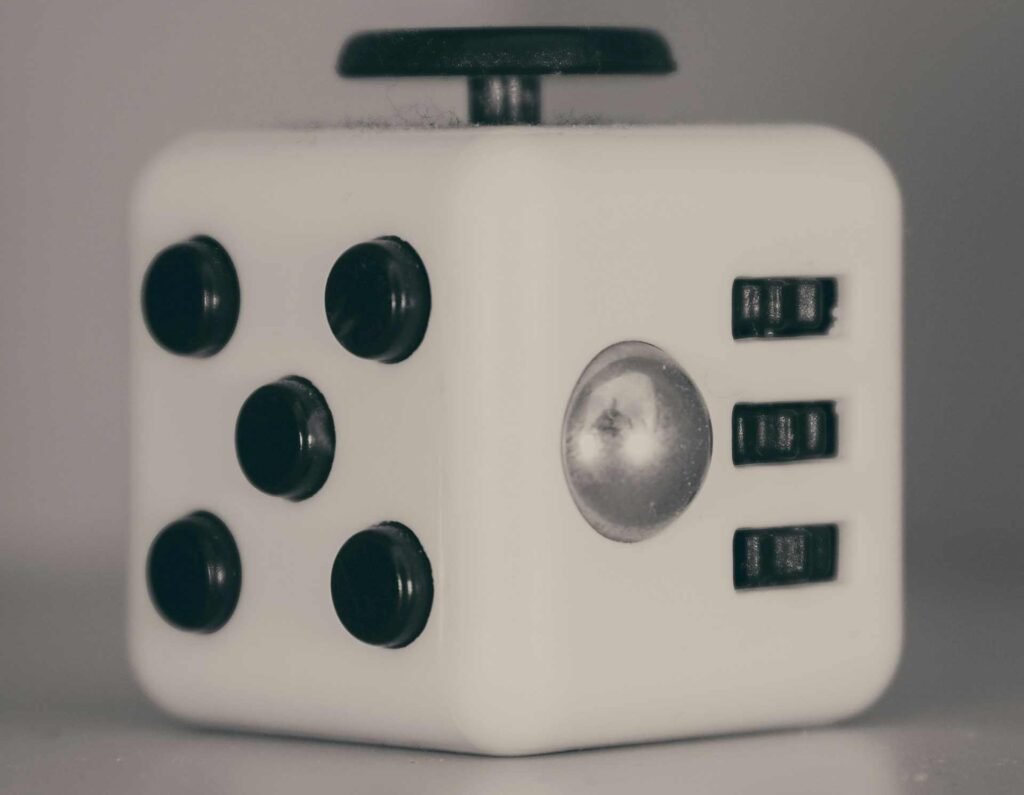
Fidget spinners, on the other hand, provide a very different experience. The spinning motion offers visual and tactile feedback, creating a somewhat hypnotic effect that some people find incredibly calming. The momentum and balance required can be satisfying for those who enjoy that type of sensory input.
But here’s the catch: do fidget spinners help you concentrate in all situations? Not necessarily. Their visual nature means they can become something you watch rather than just feel, potentially pulling your attention away from your primary task. They also tend to be more noticeable to others, which might not fly in certain professional environments.
Other fidget types have their own superpowers too. Putty and stress balls provide resistance and can help work out physical tension. Worry stones offer smooth, soothing textures. Tangle toys give you something to manipulate in countless configurations. The key is experimenting to find what type of sensory input helps your brain hit its stride.
The Science-Backed Benefits of Fidget Toys
Let’s move beyond the anecdotal evidence and look at what actually happens in our brains and bodies when we fidget productively.
Improved working memory: Some research suggests that certain types of movement can enhance our ability to hold and manipulate information in our minds. When your hands are occupied with a simple, repetitive task, your brain might actually have an easier time maintaining focus on complex mental work.
Reduced cognitive load from managing restlessness: If you’re someone who naturally wants to move, forcing yourself to stay completely still actually uses up mental energy. It’s like trying to balance on one foot while solving math problems. Give yourself permission to fidget, and suddenly that math gets easier because you’re not also fighting your body’s natural tendencies.
Better emotional regulation: The fidget benefits extend beyond just focus. Repetitive, soothing motions can help manage anxiety, frustration, or overwhelm. This emotional steadiness then creates a better foundation for concentration.
Increased alertness during passive activities: During tasks where you’re primarily receiving information rather than actively producing it (like attending webinars or reading reports), fidgeting can keep your arousal level high enough to prevent that dreaded glaze-over effect.
Enhanced creative thinking: This one surprised us too, but there’s something to be said for how gentle, mindless hand movements can help facilitate those “aha!” moments. When you’re stuck on a problem, sometimes the solution appears when you’re not forcing it, and fidgeting might help create that mental space.
Finding Your Perfect Fidget Match
Here’s where personal experimentation becomes your best friend. The fidget toy that transforms your productivity might be completely different from what works for your desk neighbor.
Consider your environment first. Working in a quiet library? You’ll want something silent like a smooth worry stone or soft putty. In a more casual office where clicking sounds won’t get you banned from meetings? A fidget cube with clicky buttons might be perfect. For anyone maintaining productivity in spaces where they need to be discreet, choosing the right tool becomes even more important.
Think about what type of sensation you’re craving. Do you like pressure and resistance? Stress balls and theraputty might be your jam. Prefer smooth, flowing movements? Spinners or roller-based fidgets could be the winner. Enjoy variety and options? Cubes give you multiple experiences in one package.
Size matters too. Some people love pocket-sized fidgets they can carry everywhere, while others prefer slightly larger desk toys that feel more substantial. There’s no universal right answer here, just what feels right for your hands and your habits.
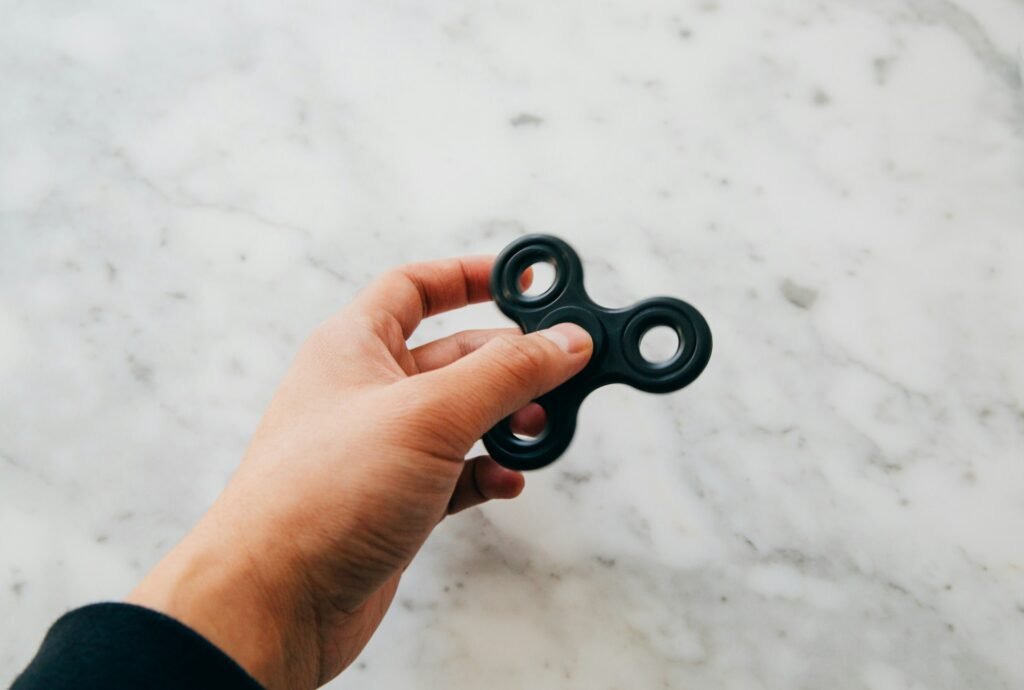
Temperature and texture also play surprising roles. Some fidgets are cool metal, others soft silicone, and some feature multiple textures on different surfaces. Your sensory preferences will guide you toward what feels most satisfying.
Creating the Ultimate Focus-Friendly Workspace
Fidget toys are just one piece of the productivity puzzle. The most effective approach combines the right tools with the right environment.
Your physical workspace plays a huge role in how well you can concentrate. Proper lighting helps reduce eye strain and maintains alertness throughout the day. Temperature affects focus too, with most people performing best in slightly cool environments rather than warm ones.
Ergonomics deserves serious attention because discomfort is the enemy of concentration. If your back hurts or your wrists ache, no fidget toy will overcome that distraction. Consider whether you’d benefit from tools like supportive wrist rests or whether adjusting your sitting position with ergonomic seat cushions could reduce fidgeting that stems from physical discomfort rather than cognitive needs.
Sound is another powerful focus factor. Some people work best in complete silence, while others need background noise to prevent their minds from wandering. Understanding your auditory preferences helps you create the right backdrop for concentration, and yes, music can be part of that equation.
Don’t overlook the power of routine and ritual. Having a consistent workspace where your brain recognizes “this is where we focus” can trigger productivity almost automatically. Your fidget toy can become part of that ritual, a physical cue that tells your brain it’s time to get down to business.
The Bigger Picture: Movement and Focus
Fidget toys represent just one approach to the fundamental truth that many people think better when they move. Expanding your understanding of this connection opens up even more strategies for optimizing your focus.
Some people find that incorporating larger movements helps their concentration even more than hand fidgets. Taking short walks during breaks, stretching between tasks, or even using standing desks throughout the day can provide the movement your brain craves on a bigger scale.
The point isn’t that everyone needs to become a fidgeter or that movement is the only path to focus. Rather, it’s about recognizing that different brains have different needs, and giving yourself permission to work with your natural tendencies rather than against them.
FAQ
Do fidget toys actually help with ADHD?
Many people with ADHD report that fidget toys genuinely improve their ability to maintain focus, particularly during tasks that require sustained attention like listening or reading. The extra sensory input helps their brains reach an optimal level of stimulation. However, it’s important to remember that fidget toys are tools, not treatments. They can be helpful additions to comprehensive ADHD management strategies, but they don’t replace proper diagnosis, medication (when appropriate), or other therapeutic approaches.
Can fidget toys be distracting to others?
Absolutely, and this is worth considering when choosing and using fidgets in shared spaces. Visual fidgets like spinners are more likely to catch others’ attention than tactile ones you can use without looking. Noisy fidgets with clicks, rattles, or other sounds can definitely bother nearby people trying to concentrate. If you’re using fidgets at work or school, opt for quieter, more discreet options and be open to feedback from the people around you.
How long does it take to know if a fidget toy helps you focus?
Most people can tell within a week or two of regular use whether a particular fidget toy is helping or hindering their concentration. The key is using it consistently during your typical work or study sessions and honestly evaluating whether you feel more focused or more distracted. If you’re spending more time thinking about the fidget than your actual task, it’s probably not the right tool for you. On the flip side, if you stop noticing it after a few days because it just feels natural, that’s usually a sign it’s working well.
Are there situations where fidget toys definitely won’t help?
Yes, some tasks and scenarios just don’t pair well with fidgeting. Activities requiring intense visual-spatial processing, detailed hand-eye coordination, or both hands actively engaged in the primary task won’t benefit from fidget toys. High-pressure situations where any distraction could be problematic also aren’t ideal times for fidgets. Additionally, if you’re someone who naturally focuses well while sitting still, forcing yourself to use a fidget toy because it’s trendy probably won’t offer any benefits.
The Bottom Line on Fidgets and Focus
So do fidget toys help you focus? For many people, the answer is a solid yes, but with some important caveats and conditions. They’re not universal solutions, and they work best when matched carefully to individual needs, tasks, and environments.
The real value of fidget toys might be less about the objects themselves and more about what they represent: permission to work with your brain instead of against it. For too long, the ideal worker or student was imagined as someone who could sit motionless for hours, channeling every ounce of energy into pure mental focus. But humans are physical beings, and for many of us, our minds work better when our bodies have something to do.
Whether you end up loving fidget cubes, finding peace with a simple stress ball, or discovering that you’re actually a pen-clicker at heart, the goal remains the same: finding what helps you do your best thinking. Maybe that involves a pocket full of tactile tools, or maybe it means taking more movement breaks, or perhaps it’s some combination we haven’t even discussed here.
The fidget toy trend has given us permission to experiment and acknowledge that focus isn’t one-size-fits-all. It’s reminded us that sometimes the things that look like distractions are actually the supports that keep us engaged. And honestly? In a world that demands our attention from approximately seven thousand directions at once, we’ll take any legitimate tool that helps us stay on task.
Looking for more? Check out our productivity tools category for more articles and guides that may interest you!
Featured image credit: Photo by Sebastian Voortman on Pexels
This content is for informational purposes only. Please verify current information directly on the retailer’s site before purchasing.
References:
Aspiranti KB, Hulac DM. Using Fidget Spinners to Improve On-Task Classroom Behavior for Students With ADHD. Behav Anal Pract. 2021 Jun 2;15(2):454-465. https://doi.org/10.1007/s40617-021-00588-2

